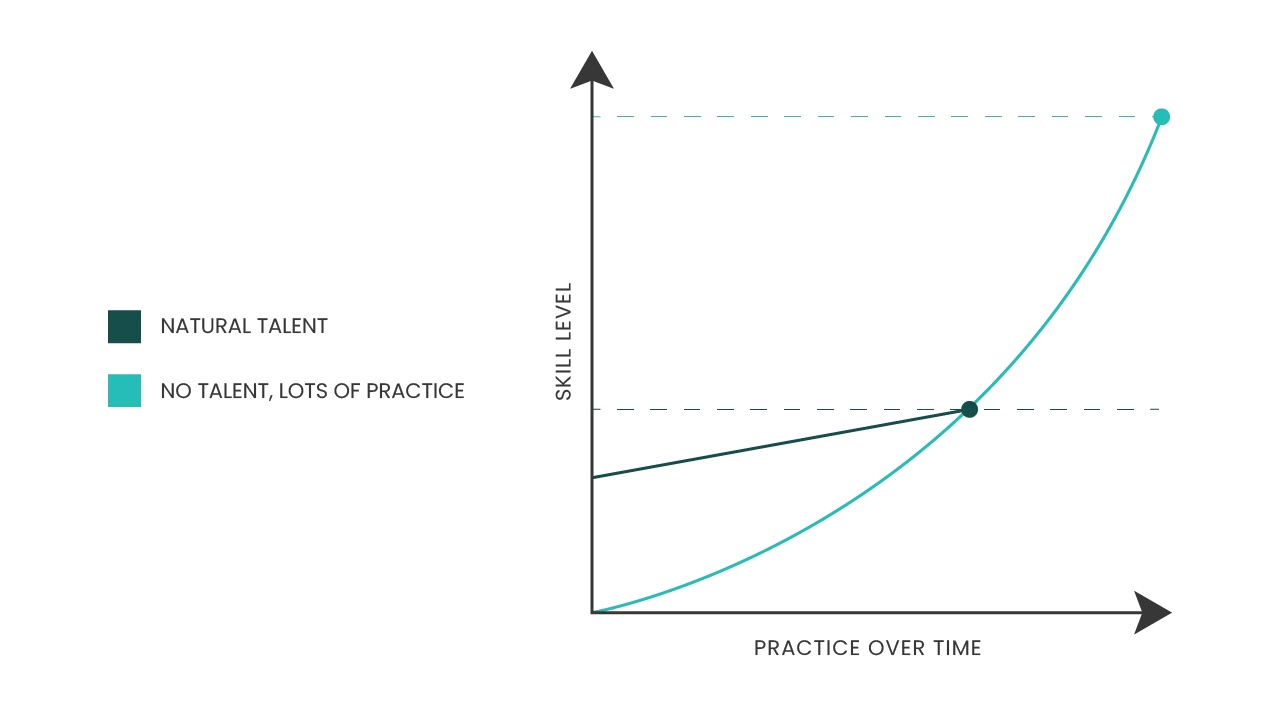How Xerox sparked innovation, the talent vs. skill debate, and the hidden genius of everyday design.

Xerox
Xerox is famous for copying things—but their best “copy” ever wasn’t made on a copy machine. In 1979, they let Steve Jobs into their Palo Alto Research Center, and he copied ideas from them that would change the future of technology forever.
As a condition of their investment in Apple, Xerox open their research lab to Jobs where he saw an input device—the mouse—that let you move a cursor on the screen and select items with a click. Combined with the graphical user interface, it allowed users to interact with computers visually, instead of relying solely on typed commands.
At the time, Xerox wasn’t doing much with the technology. It wasn’t integrated into any products they sold, and it wasn’t much more than a proof of concept, but Jobs’s creativity, guided by his curiosity, urged him to ask what if all computers operated with an intuitive interface? What would that mean for the industry as a whole?
In 1984 Apple introduced the Macintosh to the world, and with it a single button mouse that ushered in a new era of personal, intuitive computing.
Fun Fact: To this day, Apple computers still come with “right click” disabled by default harkening back to the single button mouse of the Macintosh (something I find very annoying as a computer teacher who has to enable it every semester).
Takeaway: Curiosity can be a powerful, and often under appreciated, tool in the creative toolkit.
Art and Fear
I’m working my way through a short book called Art and Fear, and wanted to share a passage that made me pause, take out a pencil, underline some text, and dog ear a page:
The function of the overwhelming majority of your artwork is simply to teach you how to make the small fraction of your artwork that soars. One of the basic and difficult lessons every artist must learn is that even the failed pieces are essential.
As an amateur guitar builder, just about every guitar I’ve made features a “devastating error” that drives me crazy. Of course no one else can even really see it, but the difference in quality between my first and 10th guitars when compared side-by-side is huge.
I take comfort in knowing that each error I make is one I know to avoid in the future. I’m still waiting for the moment I leaves luthiers weak in the knees, but I know each one I build is one step closer towards that happening.
Takeaway: Failure isn’t the opposite of success, it’s often a necessary step along the way.
Norman Doors
If you’ve ever opened a door wrong, pushed instead of pulled or pulled instead of pushed, you’ll be happy to hear, it wasn’t your fault. It was the door’s fault, or rather the designer of the door who built it in a less than intuitive way.
In 1988, Don Norma wrote the book The Design of Everyday Things as a result of his experience interacting with poorly designed doors and light switches while working in England. The book explains the principles of good design, emphasizing simplicity, intuitive functionality, and how users interact with objects. It has become a foundational text in design and usability.
The video below from Vox, featuring Roman Mars of 99% Invisible (a design centric podcast) takes a humorous look at Norman Doors and the design of every day things.
I show this video to my 100-level graphic design students when introducing the principle of design of transparency, which we examine both literally in terms of opacity and figuratively in terms of how good design becomes invisible by seamlessly meeting expectations—only noticed when it fails.
Takeaway: it’s sometimes easy to ignore the intentional decisions that were made in the design of everyday things, and it’s not until they’re unexpectedly brought to our attention, like when we walk face first into the “Pull” door, that we take notice. Don’t forget to appreciate the world that was built around you.
Talent vs Skill Over Time
I came across an article that examines the difference between Talent and Skill—terms we often use interchangeably. The article differentiates between the two as follows:
The definition of talent is a natural ability someone is born with, like a perfect pitch in music or a creative mind. Skill is an ability that comes from practice, something you can learn like computer coding or gardening.
Not everyone who’s exceptional though is truly talented. Michael Jordan was famously cut from his high school basketball team and credits his success to his unrelenting work ethic and dedication to practice.
As a lacrosse coach, I witnessed countless athletes without a shred of natural talent out work their much more gifted peers, become more skilled, and earn significantly more playing time. I also saw incredibly talented athletes with zero work ethic who found themselves cut from the program.
I created the line graph below to visualize the difference between natural talents who stop working on their craft compared to their less talented but much more tenacious counterparts. Over time, consistent skill development beats natural talent alone.

Of course, the combination of natural talent and unyielding skill development is a combination that’s near impossible to beat, but I can’t speak to that from personal experience 😀.
This concept isn’t unique to athletic endeavors. In creative pursuits, there are certainly those who are innately better at drawing, sculpting, dancing, singing, and crafting pros, but all of those things are in fact learnable. With the right mindset, discipline, dedication, and time there’s very little you can’t improve in.
Takeaway: When you recognize the effort behind exceptional skill, it’s easier to find inspiration in their dedication rather than envy in their “talent.”
Joey and Eric
I love connecting with former students—especially when they’re doing really cool things after college. It’s even cooler when I can find a reason to invite them into my class to speak to my current students about the cool things that they’re doing.
A few weeks back, I had the privilege of hosting, Joey Masloski, who I first taught in 2016 during his sophomore year, to speak to my entrepreneurship students about his post collegiate career as a social media influencer and founder of Pink Tongue Bandanas.
About a year ago, Joey and his co-founder Eric Noxon started an Instagram account where they, among other things, run shelter dogs, take them to get groomed, and use that awareness to help them get adopted.
At the time of writing this, they’ve earned over 323K followers, and they show no signs of slowing down. On the back of their social media success, they’ve done brand deals with companies like Pet Smart and built an awesome dog bandana company.
I find inspiration in young people who strike out on their own to build a life on their own terms. Give Joey and Eric a follow, and get your dog a killer bandana for the holidays.
Takeaway: there are no more gatekeepers. If you dreamed of being on Animal Planet as a kid or having a product featured in your favorite store, you can become your own Animal Planet and build you own store online.
That’s all for now
If you’re reading this online, it would mean the world to me if you subscribed to my newsletter. It’s free, and always about creativity and innovation. If you’re already subscribed, please share this with a friend.
See you on Tuesday for two quick hits of inspiration.
-Mike